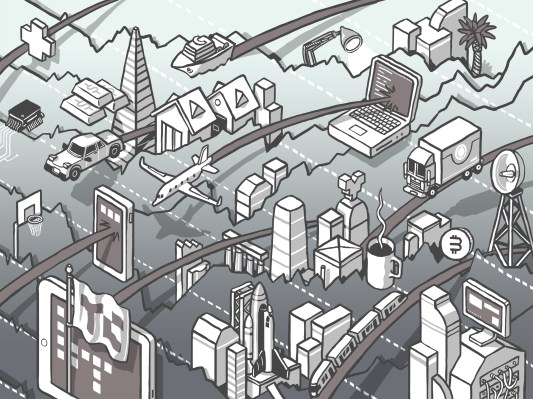Since The Exchange last checked in on the world of low- and no-code startup funding, several more interesting rounds in the niche have bubbled up.
This week, TechCrunch covered a startup called Hevo raising $8 million, and Paragon, which raised a $2.5 million seed round. Hevo is a “data pipeline startup” that helps “clients’ employees to integrate data from more than 150 different sources — including enterprise software from Salesforce and Oracle without requiring a technical background,” we reported.
Paragon, part of Y Combinator’s Winter 2020 batch, is a developer productivity-focused service that “makes it easier for non-technical people to be able to build out integrations using our visual workflow editor” according to its co-founder Brandon Foo. Paragon wants to “bring the benefits of low code to product and engineering teams and make it easier to build products without writing manual code for every single integration” to help “streamline the product development process,” Foo added.
And there are more rounds worth highlighting in the space since we last looked, like $4 million for Enduvo (no-code AR/VR), a $3.45 million extension for the fast-growing Turbo Systems (a no-code “engagement platform”), and a seed round for CloudWorx (no-code IoT), among others.
 The trend that we noted last week that no-code and low-code startups are raising lots of capital is still hot.
The trend that we noted last week that no-code and low-code startups are raising lots of capital is still hot.
But startups aren’t the only companies working in this space: Apple has long had a foot in the domain via its subsidiary Claris, which rebranded to that name last year after running under the FileMaker moniker. At the time, Claris CEO Brad Freitag told TechCrunch that his company’s vision was to make “powerful technology accessible to everyone.”
That wasn’t merely cliché: Claris’ best-known product, FileMaker, helps users build low-code apps, and its second product is called Connect, a service that helps users link APIs using low-code tooling.
Given that Claris has been in the no-code, low-code space for longer than most, TechCrunch caught up with Freitag again to chat about recent growth in the market category, what he thinks of the low-code terminology, and, of course, his take on startups in the niche.
The growth of no-code and low-code
When Claris announced its rebrand last August, Freitag said that when his firm looks out a half decade, it sees its “user community” growing “by at least 3x and there’s a pretty clear path to getting there,” citing ample growth opportunities for Claris abroad.
Undergirding that expected boom in no-code, and low-code users is an interesting thesis from Freitag. In an interview this week, TechCrunch asked him what has driven the rise in the popularity of the low- and no-code world in recent quarters — was there a catalyst driving the change?
Not in a technological sense, Freitag responded, saying instead that the driving force behind what TechCrunch has seen in-market has been overwhelmed IT organizations saying “we can’t operate the way we’ve been operating” anymore. “There’s just too much demand” on IT he said, placing consultancies, CIOs and other parts of the technology community under the umbrella term.
“Fundamentally,” Freitag said, “it boils down to the scarcity of computer scientists,” he said. And what we tend to call no-code and low-code tooling, may be “the only way to solve the problems that we need to solve.”
That’s a hopeful sentiment for Claris and the legion of startups building products and services with a similar approach, especially as the demand for IT talent, apps, programming and the like is not set to slow. Indeed, as TechCrunch has reported endlessly of late, the digital transformation is accelerating, something that this column has also explored recently from the perspective of remote workers.
But even as the world moves toward Claris and its products, its CEO isn’t entirely sold on describing it as “no-code and low-code.” In our conversation, Freitag said that he has a “love-hate relationship with the language.” Why? When it comes to low-code itself, he said he has “yet to talk to any passionate problem-solver […] who self-identifies as a low-coder.” That’s clear enough, I suppose.
On the no-code front, he added that he doesn’t know “what exactly is meant by no-code and what the value is.”
But don’t think that Freitag is being harsh, he added that low-code work sits well-between what more traditional programmers and IT orgs do, and the business side of a company. On the no-code front, the CEO said there’s an “aspect” of Claris that is no-code in that it offers a drag-and-drop interface “that anybody can work with.” Still, in his view, “to run applications in a business,” it’s mandatory to “think about governance and system standards,” which means that “the no-code thing gets a little carried away.”
Startups
Terminology nuance aside, Claris is a two-product company today because it bought Stamplay, now called Claris Connect. We wanted to know, then, where he sees interesting work going on in the startup world of no-code and low-code startups. Freitag cited robotic process automation (RPA) as one such space, especially how the services might work for small and midsized companies. Another place that the Claris CEO sees opportunity is in low-code AI/ML tooling for code review and optimization.
Over the last eighteen months, Freitag said “awareness and interest” from “low-code developers has easily doubled.” That means growing demand for at least low-code solutions — and, we’d reckon no-code as well — and perhaps good growth for the startups out there building for just those workers.
